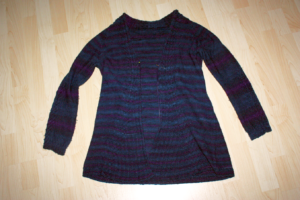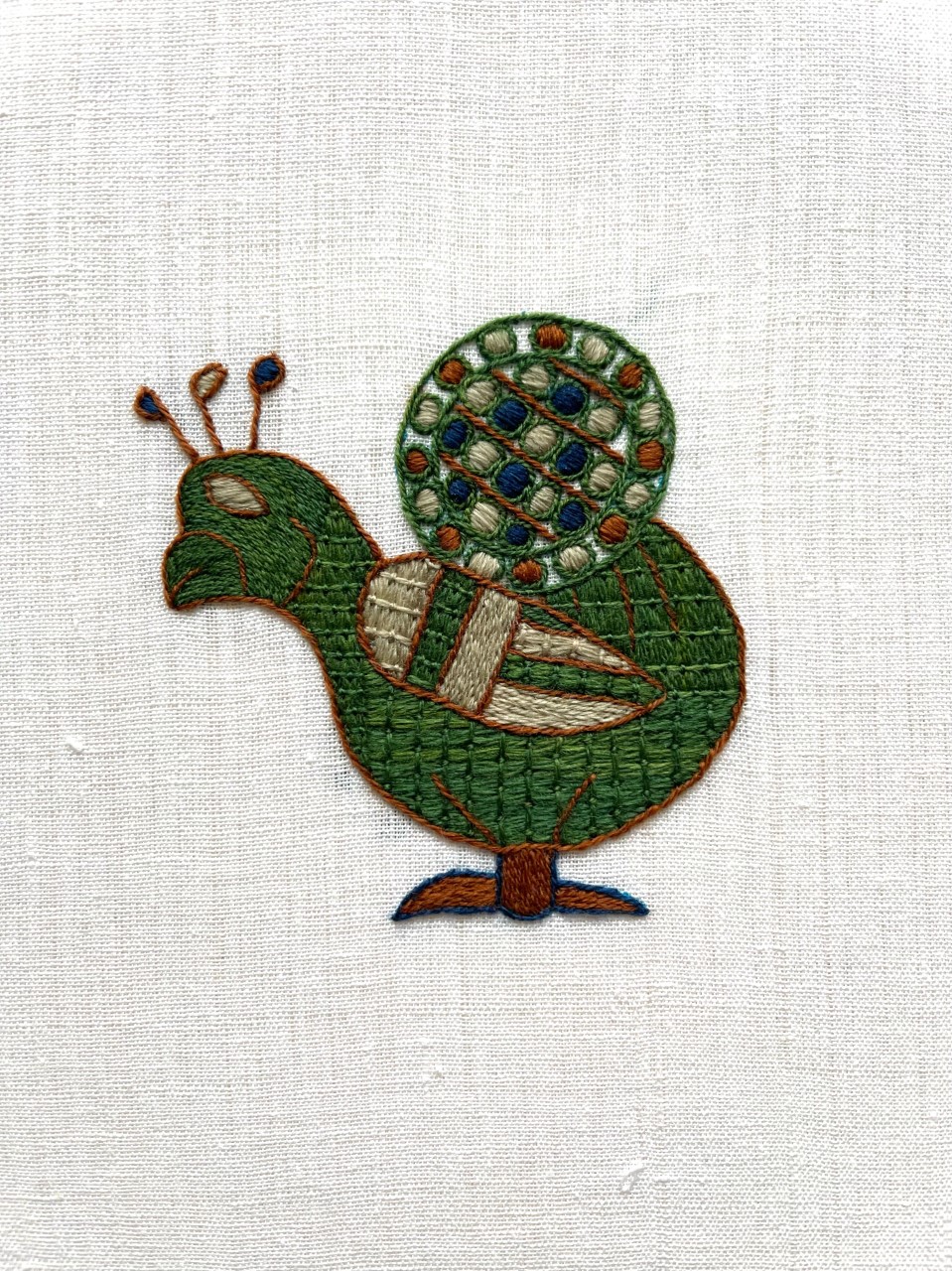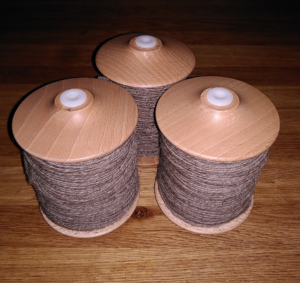Sometimes I have days (or is it still nights?) when I wake up way too early and cannot get back to sleep... so I usually get up and try to do something useful. Such as... work.
Today was one of those days - which means that it's now mid-afternoon and I'm feeling a bit more tired than I'd like to be, but there's still a stack of office work to be handled. (If you're wondering what I did the rest of the day, the answer is simple: For most of the time, I turned fluffy stuff into yarn.) It's no huge help that the cat is curled up on the sofa, napping and looking very cute and cuddle-able. There's visible progress, though. Yarn is happening! Not quite as quickly as I'd like it to, but hey, that's life.
Spinning speeds are something weird anyways. When I'm spinning for a project, I record all the time I spend on it, and I try to split time-keeping and -recording into the individual tasks to have a better overview in the end. So I will make notes for the time spent spinning, skeining, and wet-finishing the yarns. I did this for past projects as well, and I found that spinning speeds are not completely consistent. That is partly due to current form, partly depends on the kind of yarn to be spun and the fibre (and fibre prep), but there's also another factor: It's quite easy to fall into a slow, relaxed, dreamy pace even though I can draft faster. That will lead to slower spinning speed, of course, thank you Captain Obvious.
I'm not quite sure where that comes from - when I still only had my little wheel, the limiting factor was not the drafting speed, but the treadling speed. (There's only so fast that you can pedal.) With the hand-spindle, flicking speed and spindle turning speed is one limiting factor, the other is winding up speed. Winding up takes a lot of time, even if it's done quickly and efficiently. With the e-spinner, neither of these is there - so I can spin just as fast as I can draft.
In theory, that is quite, quite fast. I've done short test runs to find out how fast I can go, and it was significantly faster than with the spindle or treadle wheel - I think it was in the 140 m per hour range, or even a little higher. There are, however, limits to a sustainable drafting speed. I've learned that while I am able to go as fast for a short time, I'll fall into a slower rhythm when I am working for longer stretches of time. Which is okay - no sprinter is going to hold their speed for a marathon distance. The really evil trap, though, is when things start to feel so meditative and calming that spinning speed goes down some more, and more.
So when I'm production spinning now, I'm not only checking regularly for thickness, twist angle, overall okay-looking-ness of the yarn, progress on the bobbin and whether I have to move to the next bit of bobbin, and status of my tea cup (which includes heat and fill levels of tea), but also remind myself to keep up the good speed, and not start dawdling. I'm also wondering if people back in history had the same issues when spinning, and how they handled things. Did the medieval housewife care about whether she could be faster, or not? Was there more of a "it takes time, and will be done when it's done" mindset than we have today? I could well imagine that - but, of course, that is wild conjecture.
What do you think about the need for speed in medieval crafts, and medieval production? Is that a modern thing only? Did it depend? If so, on what? And if you're a spinner, are you leisure spinning, or production spinning? Do you have different spinning speeds? Have you ever tried to spin as fast as possible for a longer time? I'd love to hear about your experiences...








